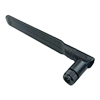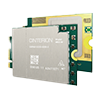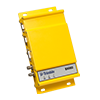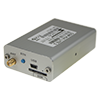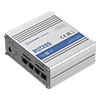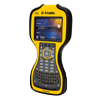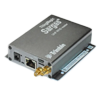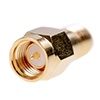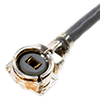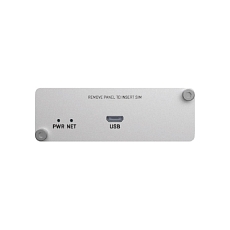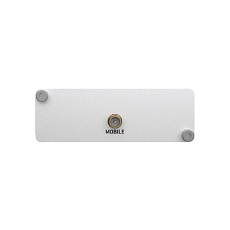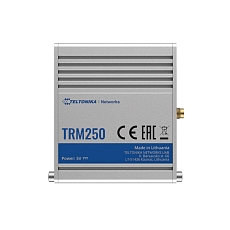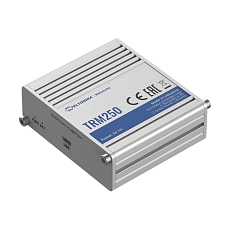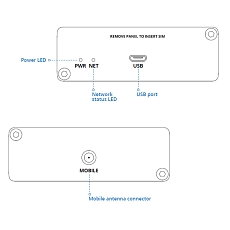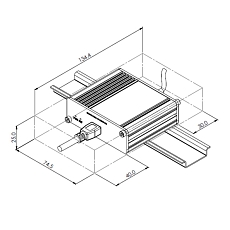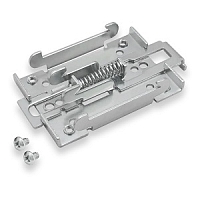Teltonika Gateway TRM250
The Teltonika TRM250 industrial modem is designed for 4G LTE (Cat-M1) mobile network. The LTE modem is compatible with NB-IoT and EGPRS (2G) technologies. It is perfect for providing cost-efficient internet connectivity in remote monitoring applications.
Due to low power consumption, the modem can be battery powered. Examples of uses include connecting and sending read data from various industrial devices such as PLCs, level sensors, air quality sensors and many others, where continuous connectivity to the Internet is not required.
The TRM250 modem in a durable aluminum housing is equipped with a USB interface which is used to connect to the Internet and an SMA connector, which is intended for connecting an external LTE antenna. The antenna provides better signal coverage.
It also has a SIM slot, so you can easily connect to the Internet via the mobile operator's network.
Easy DIN rail mounting and small dimensions allow easy placement of the device in any server rack, drawer or other places with little space.
Advantages:
• Connectivity 4G / LTE (Cat M1), NB-IoT, 2G
• USB interface for internet access
• Small size, easy installation
• Robust aluminum housing with DIN rail mounting
• Low power consumption
• MControlled using Network manager
Key Features:
• Mobile 4G / LTE (Cat M1), NB-IoT, 2G
• Possibility of microUSB power supply, 5 VDC
• SIM slot x internal SIM holder (2FF)
• 1 x SMA connector for antenna connection
• 1 x USB connector
• Status LEDs
• Degree of protection IP30
• Operating humidity 10% to 90% non-condensing
• Operating temperature -40 ° C to 75 ° C
• Dimensions (W x H x D) 75 x 25 x 65 mm
• Weight 125 g
Package contains:
• TRM250
• 1 x Mobile antenna (swivel, SMA male)
• Micro-USB cable (0.8 m)
• 1 x hex key
• QSG (Quick Start Guide)
Technical parameters can be found in the attached datasheet.
We recommend using the complete user manual and documents for configuration, official materials can be found here.
Quick Start Guide Video
The Quick Start Guide video guides you step-by-step through setting up the router from unpacking the box, inserting the SIM card, connecting the antennas, and logging into the administration.
